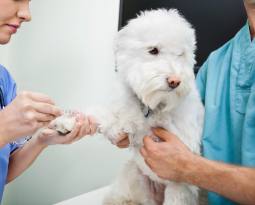When your pet is scheduled for surgery, it’s natural to feel anxious about the process. Whether it’s a routine procedure or something more complex, preparing your pet properly can help reduce stress and ensure a smooth recovery. By following the right pre-operative care steps, you can improve the chances of a successful surgery and make your pet’s experience as comfortable as possible.
Why Pet Surgery Preparation is Essential
Just like in human surgeries, pre-operative care is crucial for pets. Ensuring that your pet is in the best possible health before surgery can minimize risks during the procedure and speed up the recovery process. Your veterinarian will provide specific instructions based on your pet’s age, health condition, and the type of surgery they are undergoing. Closely following these instructions is key to your pet’s overall health and safety.
Pre-Surgical Consultation
Before the day of the surgery, your veterinarian will schedule a pre-surgical consultation. During this visit, your vet will perform a physical exam to assess your pet’s health and may conduct tests such as blood work or X-rays. These tests help to identify any underlying conditions that could affect anesthesia or the surgery itself. It’s also essential to discuss your pet’s current medications with the vet. Some medications may need to be stopped or adjusted prior to surgery to avoid complications. If your pet is older or has pre-existing conditions, the vet will explain the anesthesia process and potential risks associated with the surgery.
Fasting Before Surgery
One of the most important pre-operative care tips is ensuring your pet fasts properly before the surgery. Your veterinarian will provide guidelines on how long your pet should go without food and water. Typically, fasting for 8 to 12 hours before surgery is required to prevent vomiting during anesthesia. Vomiting can cause severe complications, including aspiration. Although pets are generally allowed to drink water up to a few hours before surgery, always follow your vet’s specific instructions. If you accidentally feed your pet too close to the surgery, inform your veterinarian immediately, as this may result in rescheduling the procedure.
Adjusting Exercise and Activity
In the days leading up to the surgery, it’s essential to manage your pet’s activity levels. Avoid intense exercise or rough play, which can put undue stress on their body. While it’s important to keep them active, opt for light, calm activities like gentle walks. You can also provide mental stimulation through interactive toys or puzzle feeders to keep your pet occupied without physical exertion. Keeping your pet calm before surgery can help reduce anxiety and ensure that they are in a relaxed state for the procedure.
Preparing a Comfortable Recovery Space
Before the day of surgery, set up a quiet, comfortable space in your home where your pet can rest after the procedure. This recovery area should be free of noise and distractions, providing a peaceful environment for your pet to relax. Soft bedding and blankets will keep your pet comfortable, especially if they’re feeling sore or drowsy post-surgery. Make sure to have any prescribed medications, such as pain relief or antibiotics, ready for when your pet comes home. Having everything prepared in advance will make the recovery process easier for both you and your pet.
Bathing and Grooming
Another aspect of preparing your pet for surgery is ensuring they are clean. Depending on the surgery, your vet may recommend bathing your pet a day or two before the procedure, especially if they won’t be able to bathe for a while afterward. Cleaning your pet helps reduce the risk of infection at the incision site. Avoid grooming or bathing your pet on the actual day of surgery, as this could make them more sensitive or uncomfortable during the procedure.
Providing Emotional Support
Pets can pick up on their owner’s emotions, so it’s important to stay calm and reassuring in the days leading up to the surgery. If your pet seems anxious, provide them with extra comfort and affection. Speak in soothing tones and try not to display any signs of anxiety, as this could increase their stress. In some cases, calming products like pheromone sprays or anxiety wraps may help, but always consult your veterinarian before using these products.
Planning for Post-Operative Care
Your veterinarian will give you detailed instructions on how to care for your pet after the surgery. This includes monitoring the incision site, administering medications, and looking out for signs of complications such as swelling, redness, or loss of appetite. Make sure you fully understand these instructions before the day of surgery, and ask any questions you might have about your pet’s recovery. Having a clear plan in place will ensure that your pet gets the care they need to recover smoothly.
Additionally, keeping an eye on your pet’s behavior during recovery is crucial. Lethargy, refusal to eat, or signs of infection should prompt you to contact your vet. Your pet’s behavior can provide insight into how well they’re healing and whether additional care is necessary.
Transportation to and from the Vet
On the day of surgery, make sure you have a plan for safely transporting your pet to and from the vet. If your pet will be groggy or disoriented after the procedure, it’s important to ensure they are secured during the trip home. For small pets, use a comfortable crate with soft bedding, while larger dogs may benefit from a seatbelt harness.
Preparing your pet for surgery may feel overwhelming, but following your veterinarian’s guidance and being proactive will help make the process smoother. By taking steps like fasting, reducing activity, and providing emotional support, you can set your pet up for a successful surgery and recovery. Proper pre-operative pet care reduces risks, alleviates stress, and ensures your pet has the best chance for a swift recovery.
If you have any questions or concerns about your pet’s surgery, don’t hesitate to reach out to your vet. The better prepared you are, the more comfortable your pet will be—before, during, and after surgery.







